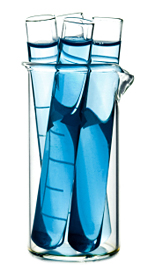| |
 |
|
Functional magnetic resonance imaging of reorganization in rat brain after stroke
Rick M. Dijkhuizen*†, JingMei Ren‡§, Joseph B. Mandeville*, Ona Wu*, Fatih M. Ozdag‡, Michael A. Moskowitz¶, Bruce R. Rosen*, and Seth P. Finklestein‡§
*MGH-NMR Center, Department of Radiology, and ¶Neuroscience Center, Departments of Neurology and Neurosurgery, Massachusetts General Hospital, Harvard Medical School, 13th Street, Building 149, Charlestown, MA 02129; and ‡CNS Growth Factor Research Laboratory, Department of Neurology, Massachusetts General Hospital, Harvard Medical School, Boston, MA 02114
Edited by Marcus E. Raichle, Washington University School of Medicine, St. Louis, MO, and approved September 10, 2001 (received for review May 14, 2001)
Functional recovery after stroke has been associated with brain plasticity; however, the exact relationship is unknown. We per- formed behavioral tests, functional MRI, and histology in a rat stroke model to assess the correlation between temporal changes in sensorimotor function, brain activation patterns, cerebral isch- emic damage, and cerebrovascular reactivity. Unilateral stroke induced a large ipsilateral infarct and acute dysfunction of the contralateral forelimb, which significantly recovered at later stages. Forelimb impairment was accompanied by loss of stimulus- induced activation in the ipsilesional sensorimotor cortex; how- ever, local tissue and perfusion were only moderately affected and cerebrovascular reactivity was preserved in this area. At 3 days after stroke, extensive activation-induced responses were de- tected in the contralesional hemisphere. After 14 days, we found reduced involvement of the contralesional hemisphere, and sig- nificant responses in the infarction periphery. Our data suggest that limb dysfunction is related to loss of brain activation in the ipsilesional sensorimotor cortex and that restoration of function is associated with biphasic recruitment of peri- and contralesional functional fields in the brain.
Stroke is one of the main causes of morbidity and invalidity in modern society. About 80–90% of stroke survivors exhibit motor weakness and 40–50% experience sensory disturbances (1). Yet, most patients show a certain degree of recovery of function over time. The prolonged time course of recovery after stroke holds promising opportunities for therapeutic interven- tion. Knowledge of the mechanisms underlying spontaneous functional recovery may help in the design of effective neuro- rehabilitative strategies.
Poststroke restitution of lost function may be explained by brain plasticity. Several animal and human studies on stroke recovery associate restoration of function with reorganization in the brain (2–6). Shifts of hand representations after focal ischemic lesions in monkeys’ sensorimotor cortex have been demonstrated with intracortical microstimulation mapping tech- niques (7, 8). In addition, brain imaging studies in chronic stroke patients have shown enhanced bilateral activation of the senso- rimotor cortex, increased activity in secondary or higher order sensorimotor areas, and recruitment of additional cortical areas during performance of a hand sensorimotor task (5). However, despite explicit demonstration of stroke-induced plastic changes in the brain, a clear causal link between cerebral reorganization and functional recovery, and its temporal characteristics, has not been established.
Our goal was to correlate temporal sensorimotor function alterations with the evolution of changes in brain activation patterns in relation to the cerebral pathophysiological status after stroke. To that end we used functional MRI methods (i) to map the complete brain network showing activation responses to sensory forelimb stimulation and (ii) to assess brain hemody- namics and tissue damage, at distinct time points in rats recov- ering from unilateral stroke.
Materials and Methods
Experimental protocols were institutionally approved in accor- dance with the National Institutes of Health Guide for the Care and Use of Laboratory Animals.
Stroke Induction. Permanent focal cerebral ischemia was induced under anesthesia with 1.5% halothane in 70% N2O/30% O2, by electrocoagulation of the right middle cerebral artery (MCA) in adult male Sprague –Dawley rats (270 –300 g; refs. 9 and 10).
Behavioral Study. Beginning on the day of surgery and continuing every other day for 2 weeks, animals were examined by using a limb placing test to assess sensorimotor function in the forelimb (10, 11). Specifically, the forelimb placing test measures senso- rimotor function in each forelimb as the animal places the limb on a tabletop in response to visual, tactile, and proprioceptive stimuli (total score 0–12; 12 maximally impaired).
MRI. In two separate groups of animals, MRI experiments were performed at 3 days poststroke (n - 6), when sensorimotor function is severely disturbed (10), and 14 days poststroke (n - 6), when sensorimotor function has recovered to subnormal levels (10). Sham-operated rats served as controls (n - 6; three animals 3 days after sham operation; three animals 14 days after sham operation).
Before MRI, rats were tracheotomized and mechanically ventilated with 1% halothane in O2/air (1/1). The right femoral artery was catheterized for monitoring of arterial blood pressure and blood gases. The right femoral vein and jugular vein were cannulated for administration of anesthetic agent and NMR contrast agent, respectively. Thin copper wires were inserted just beneath the skin on opposite sides of each forelimb at the level of the wrist. Next, rats were paralyzed by an i.v. bolus of pancuronium (2 mg/mg) followed by continuous infusion (2 mg/kg/h). The anesthetic regime was changed to a continuous i.v. infusion of a-chloralose (40 mg/kg/h), preceded by a bolus injection (50 mg/kg). Stimulation experiments were delayed by at least 1 hour to allow the anesthetic transition.
MRI was done on a 2.0 T magnet system (SISCO/Varian Instruments), using a 3-cm surface radiofrequency coil. Body temperature, blood pressure, and blood gases were carefully controlled and maintained at normal values during the MRI experiments.
Full Abstract
|
|


